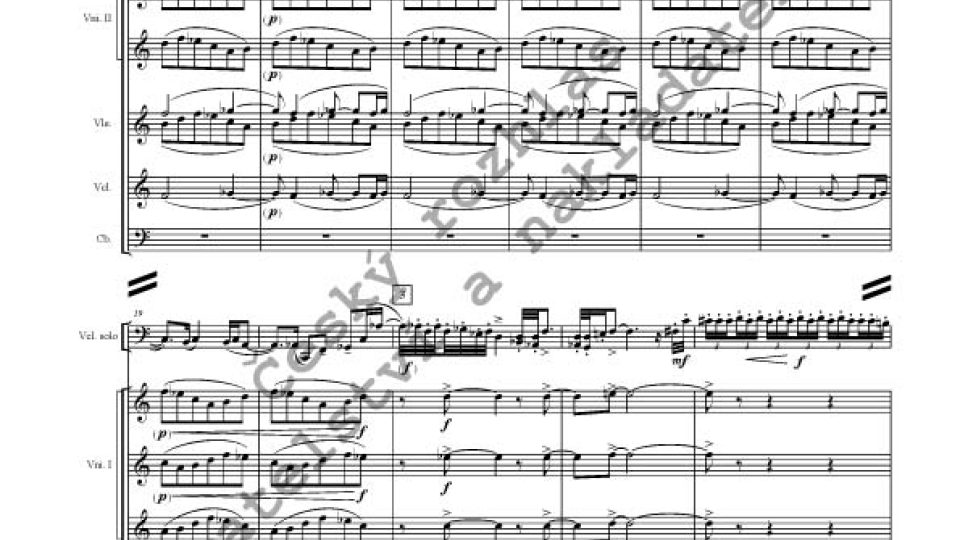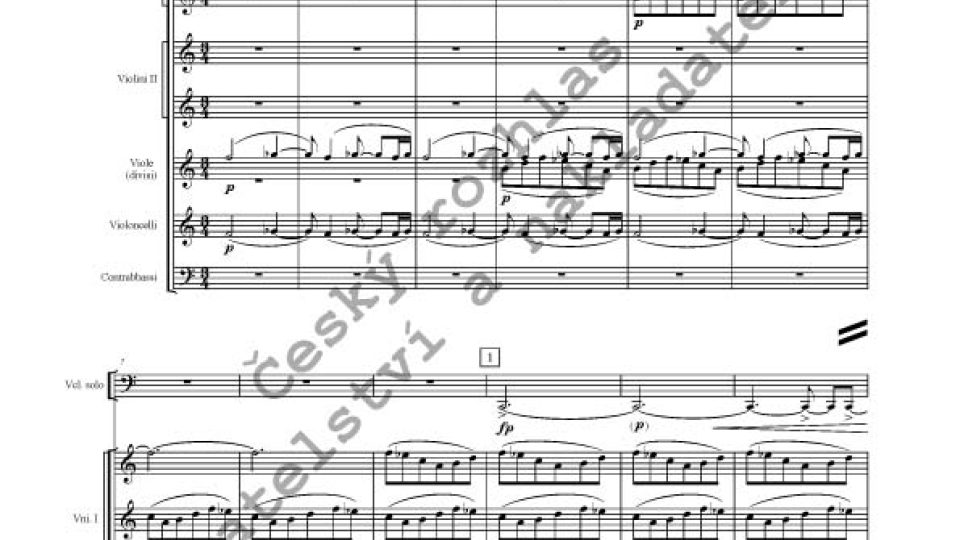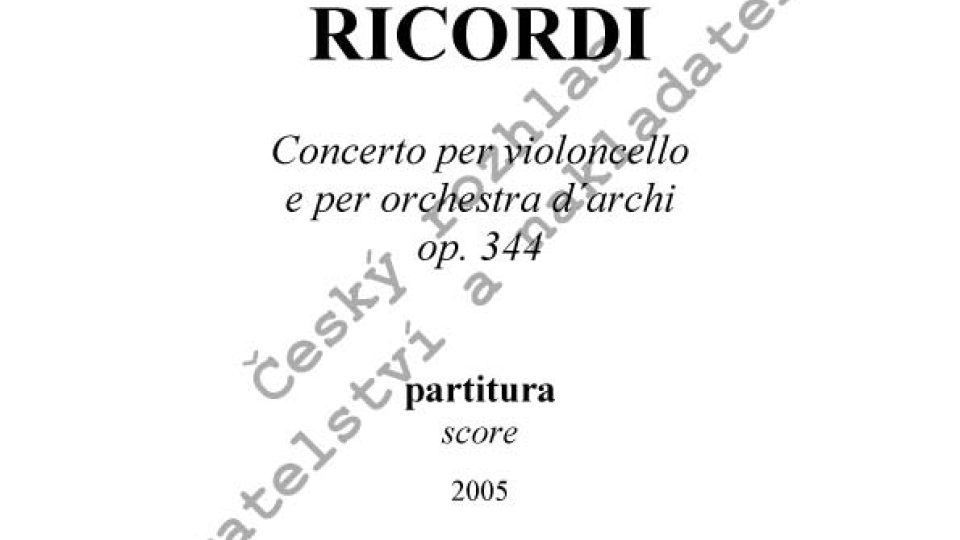Ricordi - Concerto per violoncello e per orchestra d`archi - Zdeněk Lukáš
Extensive and significant compositional work of Prague-born Zdeněk Lukáš (1928) exceeded three hundred numerated opuses. Finished in 2005 the Concerto for Violoncello and String Orchestra "Ricordi" received the opus number 344. But Lukáš's work is not only estimable numerous, but it also varies in genre and is characteristically personal. His style is very distinctive, very apprehensible and quite reliably identifiable: though coming through colorful development and tampering with various modern compositional techniques, the composer's distinctive creativity remains fixed to his own personal evolving tradition and to Czech Folklore, with which Lukáš has kept a close contact for all his life.
Lukáš is born to make melodics and melody has also been the ground for his musical invention. His melodic ideas arise from a modal base, which the composer imaginatively alters by a line of its gradual melodic variations (so called diatonic flections). By such way the melodics (together with its essential relative - harmony) show an impressive capacity for variations and expression producing dynamics. This is characteristic even of the violoncello concerto Ricordi: the modal line shown in the first part stays unaltered within its initial form for some time, that is, until the first escalation comes bringing gradual changes and melodic variations, which influence not only the alternations in the line of melodics, but also the rate of rhythmic streaming, sense of tone genre (old but still valid and potential effect of flexion on third of modal line) and therefore the entire expressive dynamics of that particular area. The melodic flexibility is in the main continuous and altered by rich melodic fantasies. The orchestral "accompaniment" often uses ostinatic models that make up a ground for a further reflection of an expressive virtuoso exhibition of the solo instrument.
The one-part composition is lucidly built in a traditional European closed form with a brief introduction and repeated main part: using almost a manifest form the classical return of the main part "Dal Segno ... al Fine" is applied here. The whole form is divided into three complex gradational waves: the introductory range culminates after the violoncello solo cadence at no. 11 of the score, then the second gradational wave begins after a cessation of the tension - as a matter of fact it is a slightly altered version of the previous range. The third and the paramount gradational range arises with no. 18 of the score and reaches its climax at no. 25 with a short monologue of solo violin as if closing the previous animated dialogic range of solo violoncello and orchestra. The violin solo also displays a musical stream to repeat the main part of the composition (Dal Segno...al Fine) by which end the composition leads into a bright C - major common chord.
The piece is dedicated to the violoncellist Mikael Ericsson whose interpretation skills have already inspired Lukáš a number of times (He is for instance together with his wife, a violinist Dana Vlachová, a dedicatee of Lukas's Duos for Violin and Violoncello op. 207 and Double Concerto for Violin, Violoncello and Orchestra op. 224).
Other compositions by Zdeněk Lukáš published by Czech Radio:
Concerto grosso
Contrasti per quattro
Death´s Triumph
Double Concerto for Violin, Violoncello and Symphonic Orchestra
Quis potest dicere, op. 346
Symphonic Concerto
The Prayer
Trio Boemo
instrumentationvlc solo, archidescriptionscorepubl.NoR 086price115 CZK
Parts only for hire at nakladatelstvi@rozhlas.cz




